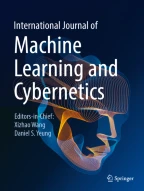494Accesses
49Citations
Abstract
It is generally assumed that one-class machine learning techniques can not reach the performance level of two-class techniques. The importance of this work is that while one-class is often the appropriate classification setting for identifying cognitive brain functions, most work in the literature has focused on two-class methods. In this paper, we demonstrate how one-class recognition of cognitive brain functions across multiple subjects can be performed at the 90% level of accuracy via an appropriate choice of features which can be chosen automatically. Our work extends one-class work by Hardoon and Manevitz (fMRI analysis via one-class machine learning techniques. In: Proceedings of the Nineteenth IJCAI, pp 1604–1605,2005), where such classification was first shown to be possible in principle albeit with an accuracy of about 60%. The results of this paper are also comparable to work of various groups around the world e.g. Cox and Savoy (NeuroImage 19:261–270,2003), Mourao-Miranda et al. (NeuroImage,2006) and Mitchell et al., (Mach Learn 57:145–175,2004) which have concentrated on two-class classification. The strengthening in the feature selection was accomplished by the use of a genetic algorithm run inside the context of a wrapper approach around a compression neural network for the basic one-class identification. In addition, versions of one-class SVM due to Scholkopf et al. (Estimating the support of a high-dimensional distribution. Technical Report MSR-TR-99-87, Microsoft Research,1999) and Manevitz and Yousef (J Mach Learn Res 2:139–154,2001) were investigated.
This is a preview of subscription content,log in via an institution to check access.
Access this article
Subscribe and save
- Get 10 units per month
- Download Article/Chapter or eBook
- 1 Unit = 1 Article or 1 Chapter
- Cancel anytime
Buy Now
Price includes VAT (Japan)
Instant access to the full article PDF.





Similar content being viewed by others
Explore related subjects
Discover the latest articles, news and stories from top researchers in related subjects.References
Cox D, Savoy R (2003) Functional magnetic resonance imaging (fmri) “brain reading”: detecting and classifying distributed patterns of fmri activity in human visual cortex. NeuroImage 19:261–270
Mitchell TM, Hutchison R, Niculescu RS, Pereira F, Wang X, Just M, Newman S (2004) Learning to decode cognitive states from brain images. Mach Learn 57:145–175
Mourao-Miranda J, Reynaud E, McGlone F, Calvert G, Brammer M (2006) The impact of temporal compression and space selection on svm analysis of single-subject and multi-subject fmri data. NeuroImage. doi:10.1016/j.neuroimage.2006.08.016
Hardoon DR, Manevitz LM (2005) fMRI analysis via one-class machine learning techniques. In: Proceedings of the Nineteenth IJCAI, pp 1604–1605
Carlson TA, Schrater P, He S (2004) Patterns of activity in the categorical representations of objects. J Cog Neurosci 15(5):704–717
Pereira F, Mitchell T, Botvinick M (2009) Machine learning classifiers and fMRI: a tutorial overview. NeuroImage 45:S199–S209 (Mathematics in Brain Imaging)
Talarich J, Tournoux P (1988) Coplanar stereotaxic atlas of the human brain. Thieme Medical, p 122
Japkowicz N, Myers C, Gluck MA (1995) A novelty detection approach to classification. In: International Joint Conference on Artificial Intelligence, pp 518–523
Manevitz L, Yousef M (2001) One-class svms for document classification. J Mach Learn Res 2:139–154
Sato J, da Graca Morais Martin M, Fujita A, Mourao-Miranda J, Brammer M, Amaro E Jr (2009) An fMRI normative database for connectivity networks using one-class support vector machines. Human Brain Mapp 30:1068–1076
Yang J, Zhong N, Liang P, Wang J, Yao Y, Lu S (2010) Brain activation detection by neighborhood one-class svm. Cogn Syst Res 11:16–24 (Brain Informatics)
Scholkopf B, Platt J, Shawe-Taylor J, Smola A, Williamson R (1999) Estimating the support of a high-dimensional distribution. Technical Report MSR-TR-99-87, Microsoft Research
Kohavi R, John GH (1997) Wrappers for feature subset selection. Artificial Intelligence
Kanwisher N, McDermott J, Chun MM (1997) The fusiform face area: a module in human extrastriate cortex specialized for face perception. J Neurosci 17:4302–4311
Cottrell GW, Munro P, Zipser D (1988) Image compression by back propagation: an example of extensional programming. Adv Cogn Sci 3
Manevitz L, Yousef M (2007) Document classification via neural networks trained exclusively with positive examples. Neurocomputing 70:1466–1481
Goldberg DE (1989) Genetic algorithms in search, optimization and machine learning. Addison-Wesley Publishing company, Inc.
Hasson U, Harel M, Levy I, Malach R (2003) Large-scale mirror-symmetry organization of human occipito-temporal objects areas. Neuron 37:1027–1041
Levy I, Hasson U, Avidan G, Hendler T, Malach R (2001) Center-periphery organization of humand object areas. Nat Neurosci 4(5):533–539
Author information
Authors and Affiliations
Computer Science Department, University of Haifa , 31905, Haifa, Israel
Omer Boehm & Larry M. Manevitz
Department of Computer Science, University College London, London, UK
David R. Hardoon
School of Computing, National University of Singapore, Singapore, Singapore
David R. Hardoon
- Omer Boehm
You can also search for this author inPubMed Google Scholar
- David R. Hardoon
You can also search for this author inPubMed Google Scholar
- Larry M. Manevitz
You can also search for this author inPubMed Google Scholar
Corresponding author
Correspondence toLarry M. Manevitz.
Rights and permissions
About this article
Cite this article
Boehm, O., Hardoon, D.R. & Manevitz, L.M. Classifying cognitive states of brain activity via one-class neural networks with feature selection by genetic algorithms.Int. J. Mach. Learn. & Cyber.2, 125–134 (2011). https://doi.org/10.1007/s13042-011-0030-3
Received:
Accepted:
Published:
Issue Date:
Share this article
Anyone you share the following link with will be able to read this content:
Sorry, a shareable link is not currently available for this article.
Provided by the Springer Nature SharedIt content-sharing initiative

